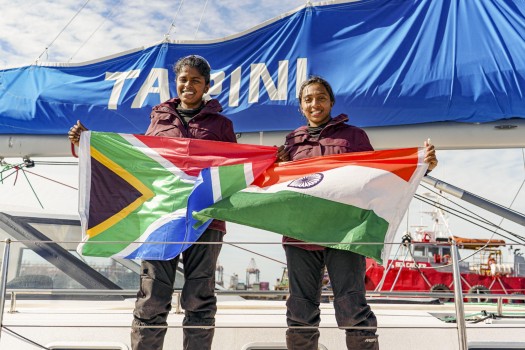
NEW DELHI (PTI): India and China have agreed to continue military and diplomatic talks to "peacefully" resolve the current border standoff in accordance with bilateral agreements, the external affairs ministry has said as it shared the outcome of a marathon military dialogue that appeared to be inconclusive.
The Indian delegation led by Lt General Harinder Singh, the general officer commanding of Leh-based 14 Corps, and Commander of the Tibet Military District Maj Gen Liu Lin held an extensive meeting in Maldo on the Chinese side of the Line of Actual Control in eastern Ladakh on Saturday that began at around 11:30 AM and went on till evening.
The high-level military dialogue could not produce any tangible results in ending the confrontation in eastern Ladakh, and India was ready for a long-haul in sensitive areas like Pangong Tso and Galwan Valley, people familiar with the development said.
In a statement, the external affairs ministry said the meeting took place in a "cordial and positive atmosphere" and that both sides agreed that an "early resolution" of the issue would contribute to the further development of the relationship between the two countries.
"Both sides agreed to peacefully resolve the situation in the border areas in accordance with various bilateral agreements and keeping in view the agreement between the leaders that peace and tranquillity in the India-China border regions is essential for the overall development of bilateral relations," it said in a statement on Sunday.
In their historic informal summit in Chinese city of Wuhan in 2018, Prime Minister Narendra Modi and Chinese President Xi Jinping had underscored the importance of maintaining peace and tranquillity in all areas of the India-China border region in the interest of the development of bilateral relations.
The summit had taken place months after a 73-day military face-off between the two armies in Doklam that raised fears of a war between the two Asian giants.
"Both sides also noted that this year marked the 70th anniversary of the establishment of diplomatic relations between the two countries and agreed that an early resolution would contribute to the further development of the relationship," the MEA said about the military talks.
It said the two sides will continue the military and diplomatic engagements to resolve the situation and to ensure peace and tranquillity in the border areas.
"India and China have maintained communications through established diplomatic and military channels to address the situation in areas along the India-China border," the MEA said.
It is learnt that the Indian delegation pressed for restoration of status quo ante in all the sensitive areas along the LAC besides seeking withdrawal of additional Chinese troops from the region including dismantling of temporary infrastructure. The LAC is the de-facto border.
Saturday's talks also came a day after the two countries held diplomatic talks during which both sides agreed to handle their "differences" through peaceful discussions while respecting each other's sensitivities and concerns.
In the last two-and-half decades India and China have signed a number of pacts on border management including an agreement in 1993 on maintenance of peace and tranquillity along the LAC and a separate one on confidence building measures in border areas in 1996.
The two sides finalised a pact titled the Protocol on Modalities for the Implementation of the Confidence Building Measures in 2005 and another agreement on the establishment of a working mechanism for consultation and coordination on border affairs in 2012.
After the standoff began early last month, the Indian military leadership decided that Indian troops will adopt a firm approach in dealing with the aggressive posturing by the Chinese troops in all disputed areas of Pangong Tso, Galwan Valley, Demchok and Daulat Beg Oldie.
The Chinese Army has been gradually ramping up its strategic reserves in its rear bases near the the LAC by rushing in artillery guns, infantry combat vehicles and heavy military equipment, the sources said.
China has also enhanced its presence in certain areas along the Line of Actual Control in Northern Sikkim and Uttarakhand following which India has also been its presence by sending additional troops, they said.
The trigger for the face-off was China's stiff opposition to India laying a key road in the Finger area around the Pangong Tso Lake besides construction of another road connecting the Darbuk-Shayok-Daulat Beg Oldie road in Galwan Valley.
The road in the Finger area in Pangong Tso is considered crucial for India to carry out patrol. India has already decided not to stall any border infrastructure projects in eastern Ladakh in view of Chinese protests.
The situation in eastern Ladakh deteriorated after around 250 Chinese and Indian soldiers were engaged in a violent face-off on May 5 and 6. The incident in Pangong Tso was followed by a similar incident in north Sikkim on May 9.
The India-China border dispute covers the 3,488-km-long LAC. China claims Arunachal Pradesh as part of southern Tibet while India contests it.
Both sides have been asserting that pending the final resolution of the boundary issue, it is necessary to maintain peace in the border areas.
 Previous Article
Previous Article Next Article
Next Article












The Indian Air Force, in its flight trials evaluation report submitted before the Defence Ministry l..
view articleAn insight into the Medium Multi-Role Combat Aircraft competition...
view articleSky enthusiasts can now spot the International Space Station (ISS) commanded by Indian-American astr..
view article